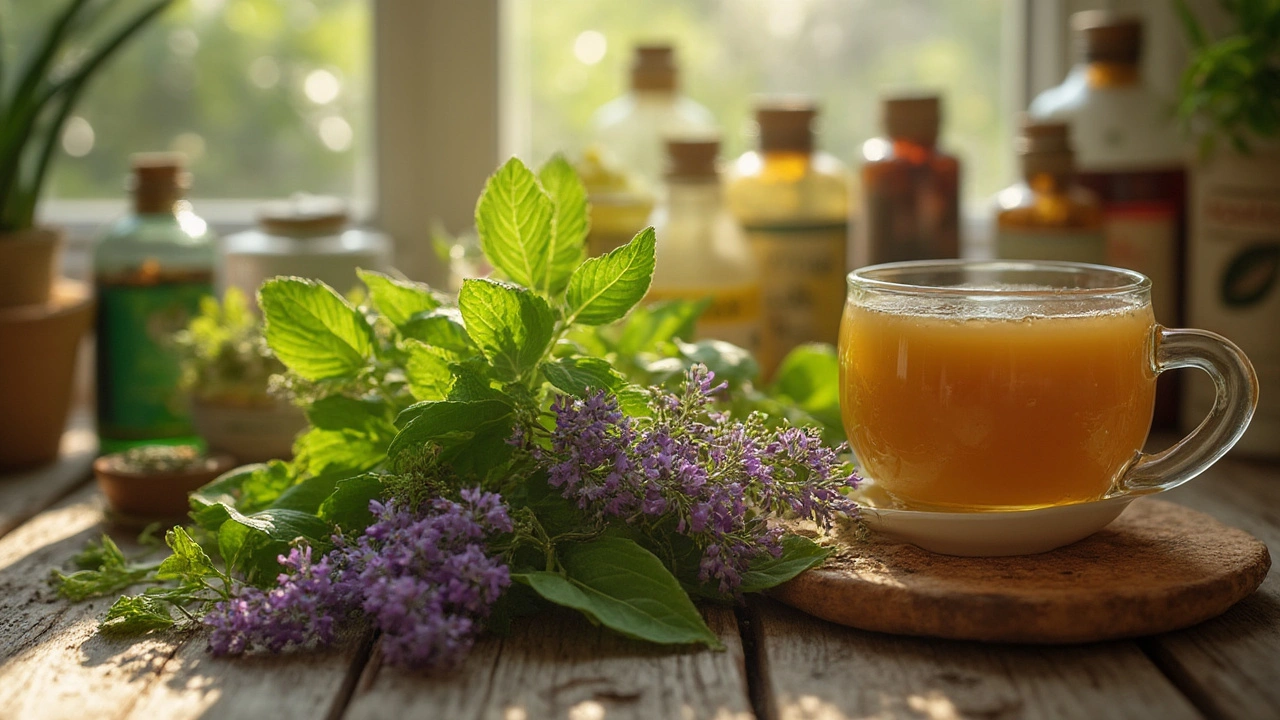Comfrey – What It Is, What It Does, and How to Use It Safely
If you’ve ever walked through a garden and spotted a plant with big, fuzzy leaves, you might have seen comfrey. Known as Symphytum officinale, it’s a hardy herb that’s been in folk medicine for centuries. People love it for soothing bruises, easing joint aches, and even helping minor skin wounds heal faster.
Popular Uses and Claimed Benefits
Comfrey’s biggest claim to fame is its ability to speed up skin repair. The plant contains allantoin, a compound that encourages new cell growth. That’s why you’ll find comfrey creams or ointments on shelves for minor cuts, burns, and insect bites. Users also report relief from sore muscles and arthritis when they apply a comfrey poultice to the affected area.
Beyond skin, some herbalists suggest comfrey as a natural remedy for sprains and bruises. A simple paste—made by crushing fresh leaves with a little water—can be applied and covered with a clean cloth. Most people say the tingling sensation turns into a warm, calming feeling within minutes.
In traditional European medicine, comfrey was once taken internally for digestive issues and bone fractures. Modern experts, however, caution against eating the herb because of a hidden danger lurking in its roots and leaves.
Safety Concerns and How to Avoid Risks
The main red flag with comfrey is its pyrrolizidine alkaloids (PAs). These chemicals can damage the liver when swallowed, and the risk grows with repeated use. Because of this, health authorities in several countries have banned internal comfrey products.
That doesn’t mean you have to stay away from the plant completely. Topical use is generally considered safe for short periods, especially when you stick to the leafy stem and avoid the roots, which hold the highest PA levels. A good rule of thumb: limit any comfrey cream or poultice to no more than a week before taking a break.
If you have liver problems, are pregnant, or are giving the herb to a child, skip comfrey altogether. Even healthy adults should follow the label instructions and never exceed the recommended application time.
When buying comfrey products, look for reputable brands that test for PA content. Buying fresh leaves from a trusted garden or farmer’s market is also fine—just wash them well, crush, and use immediately.
For a DIY approach, here’s a quick recipe: harvest a handful of young comfrey leaves, rinse, and blend with a tablespoon of olive oil. Apply the smooth mixture to a bruised knee or a minor burn, cover with gauze, and leave it on for up to 6 hours. Rinse off and give your skin a rest before the next use.
Remember, comfrey is not a substitute for professional medical care. If a wound looks infected, spreads, or doesn’t improve after a few days, see a doctor. The same goes for persistent joint pain—get a proper diagnosis before relying on herbal remedies.
In short, comfrey can be a handy addition to your home remedy toolbox when you respect the safety limits. Use it topically, keep applications short, and avoid eating any part of the plant. With those precautions, you can enjoy its soothing properties without risking your liver health.
-
Comfrey Benefits: Unlock the Power of Natural Wellness Supplements
Comfrey is the secret star in dietary supplements, offering unique natural benefits and possible health boosts. Discover how to use comfrey safely for your wellness routine.
